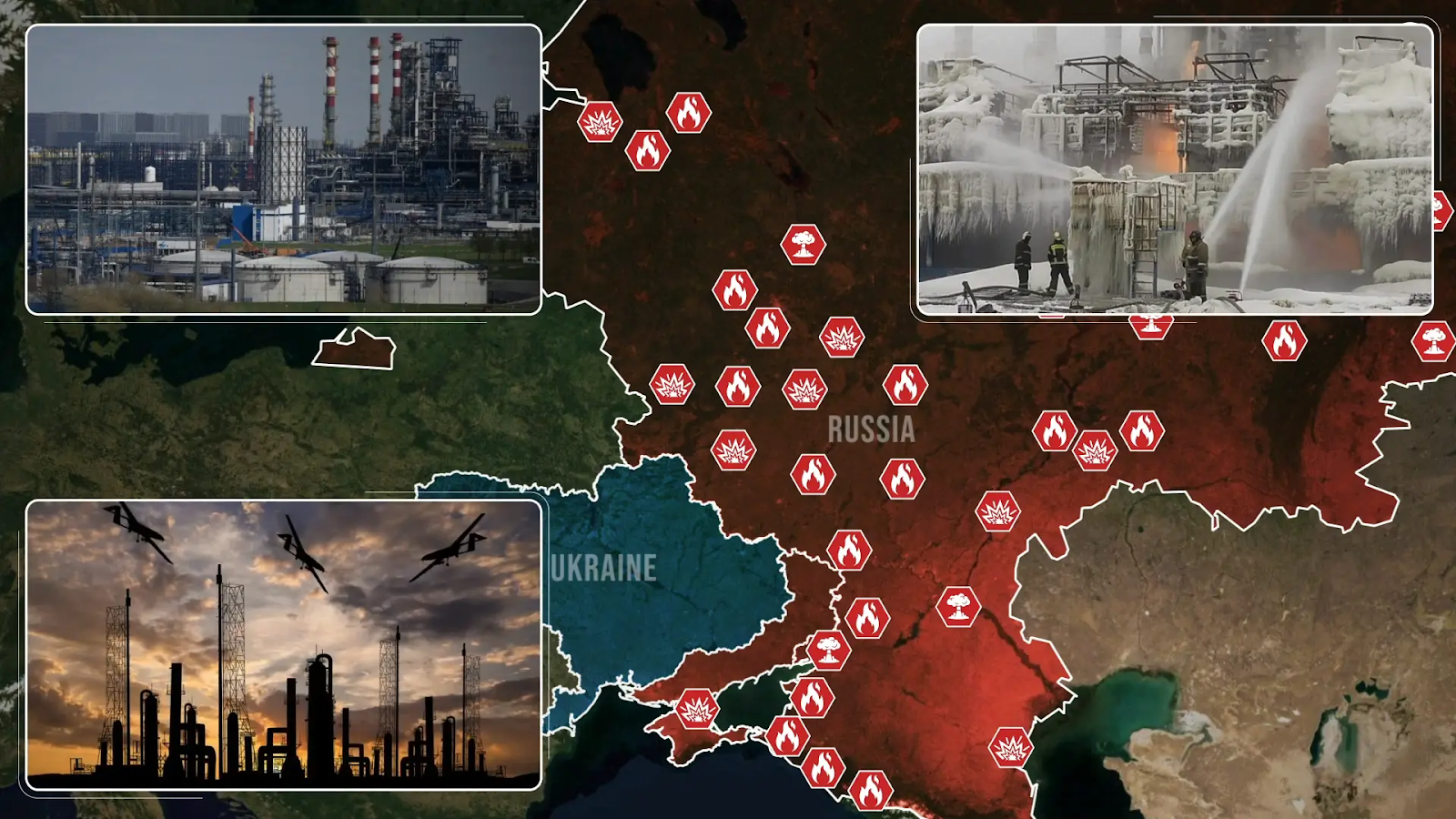Today, there is important news from the Russian Federation.
Here, Ukrainians achieved a massive success in the total amount of damages done to Russian oil infrastructure over the years. With the energy ceasefire in place, Ukrainians have a clear bargaining chip in their favor, threatening to restart the massive striking campaign if Russia dares to break the ceasefire.

Before the ceasefire, Ukrainian drone strikes inflicted substantial damage on Russia's energy infrastructure, targeting various Russian oil facilities, such as refineries, oil depots, pumping stations, and ports used for exports. Many of these targets have been hit multiple times, with the Ryazan oil refinery being struck at least nine confirmed instances over the last 15 months.

According to estimates, up to 15% of Russia's daily oil-refining capacity has been disrupted, reducing output by 600,000 to 900,000 barrels per day. This reduction has led to a 20% to 30% surge in domestic fuel prices within Russia by mid-March 2025, prompting the Russian government to implement a six-month gasoline export ban starting in March to stabilize domestic supply.

The attacks have also caused operational delays and increased repair costs, which are further exacerbated by sanctions that limit access to essential equipment and spare parts.

Military analysts revealed that just over a six-month period from September 2024 to February 2025, Ukrainian drone and missile strikes resulted in at least 658 million US dollars in damages to Russian energy infrastructure. During this timeframe, Ukrainian forces destroyed 50 oil storage tanks and damaged another 47.

The most significant single strike occurred on October 7 in Russian-controlled Crimea, where 11 tanks with a total capacity of 69,000 cubic meters were destroyed in Feodosia, causing damage exceeding 37.5 million dollars.

If we look back throughout the whole of 2024, Ukrainian forces conducted numerous drone strikes targeting key Russian oil and energy facilities. In March, attacks were carried out on the oil refineries of Ryazan, Kirishi, Norsi, Syzran, Slavyansk, and Kuibyshev, causing significant fires and operational disruptions. April saw a strike on the Taneco Refinery, while May featured attacks on the Volgograd Refinery and the Tuapse Oil Refinery.


These facilities are integral to Russia's energy sector, and their impairment has disrupted refining operations, reduced fuel production, and strained logistics within the industry.

With an estimated 15% of Russian refining capabilities destroyed before the ceasefire, this equates to over 21 billion US dollars in missing revenue, as a Ukrainian strike drone only costs a few thousand dollars. Russian repair efforts are hindered by Western sanctions, which limit access to specialized equipment and technologies necessary for the proper repair of the refineries, as many of them are either partially or entirely built by Western companies. Consequently, some facilities, such as the Astrakhan refinery hit last February, may take nearly 6 months to repair fully, while others may not fully recover to their previous operational capacities at all.

Various analysts also state that many Russian refineries will not be repaired at all due to the constant threat of Ukrainian drone strikes, the inability of the Russian military to adequately defend them, and the expectancy that the energy ceasefire will not last. In the past, Ukrainians often targeted the same refinery multiple times in succession, such as at the Kavkazskaya oil pumping station, where they waited for fires to be extinguished and repairs to be completed before launching a repeat strike that dismantled the facility’s operations once again. Due to a shortage of skilled labor and Western sanctions on critical components, it is expected to take years for Russia to repair and fully restore its refining capacity to pre-war levels if the war and sanctions persist, resulting in an estimated 63 to 105 billion US dollars in lost revenue.

Overall, the strategic targeting of Russia's energy infrastructure by Ukrainian forces serves multiple purposes. It aims to undermine the Russian war effort by reducing revenues from fuel exports, creating internal pressures within Russia due to rising fuel prices and disruptions to energy supplies, and challenging the narrative of domestic security while exposing massive vulnerabilities within Russia’s critical infrastructure.

Even though all Ukrainian strikes are currently on pause, the following targets are likely already prepared to quickly strike back if the ceasefire ends.









.jpg)








Comments